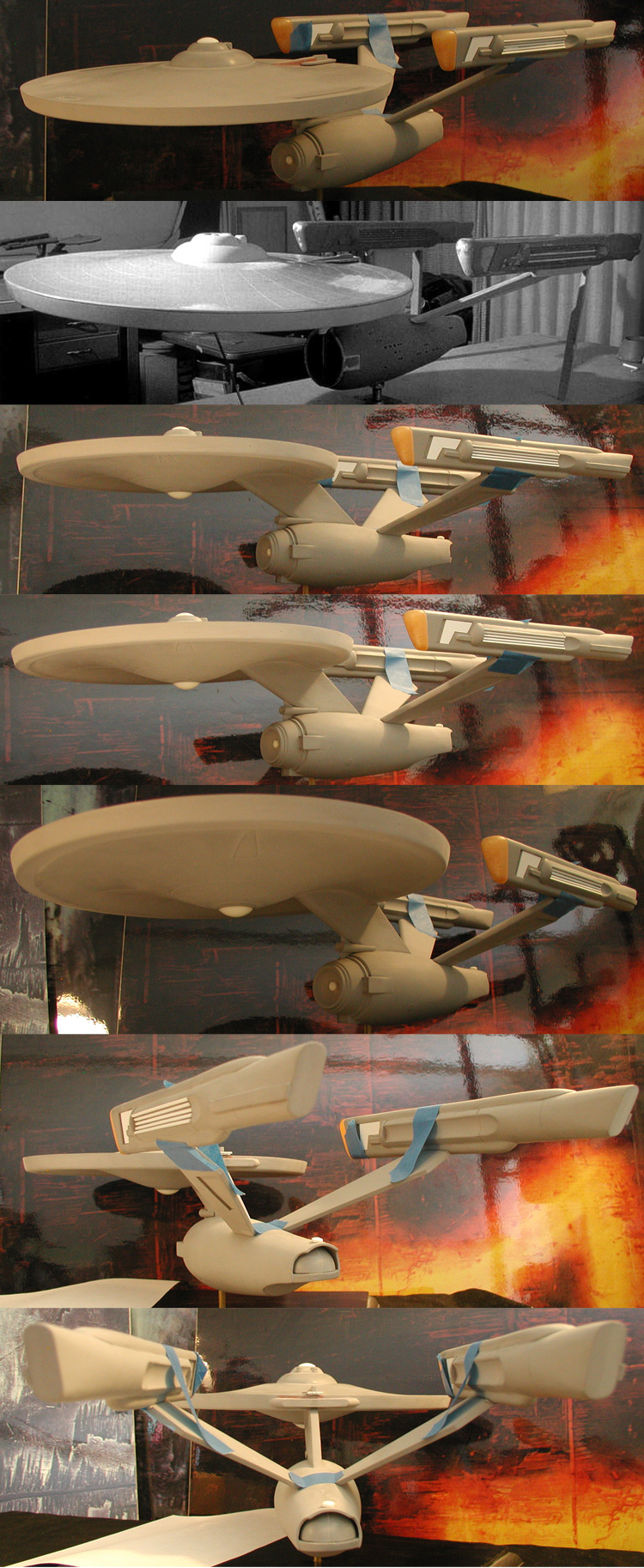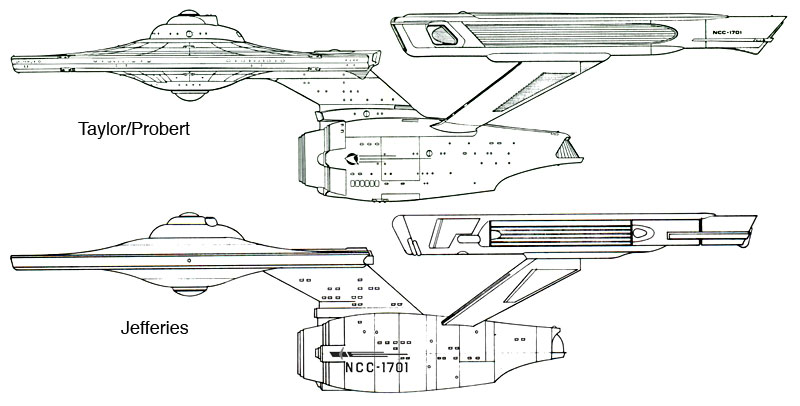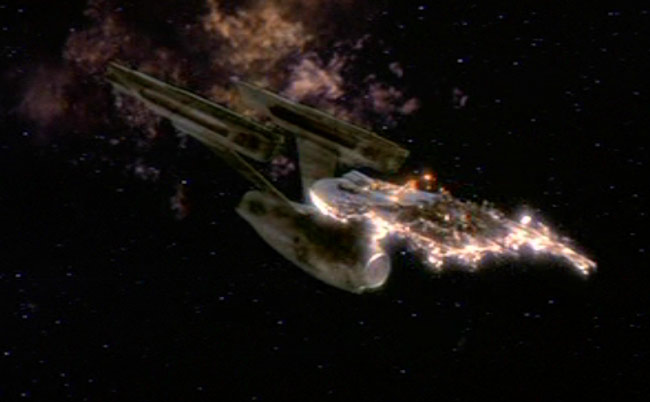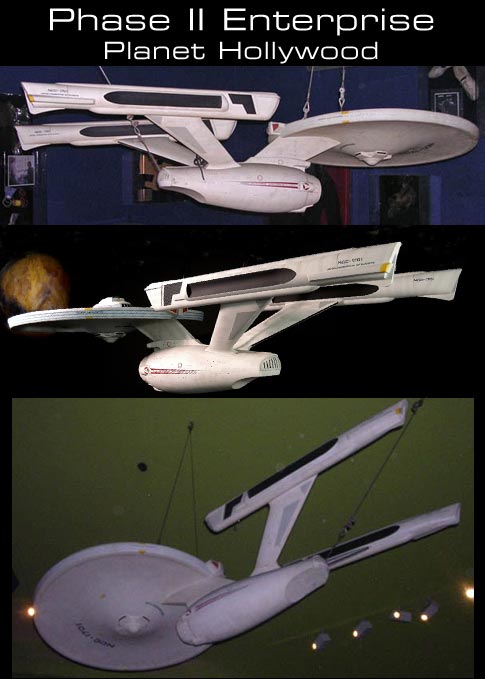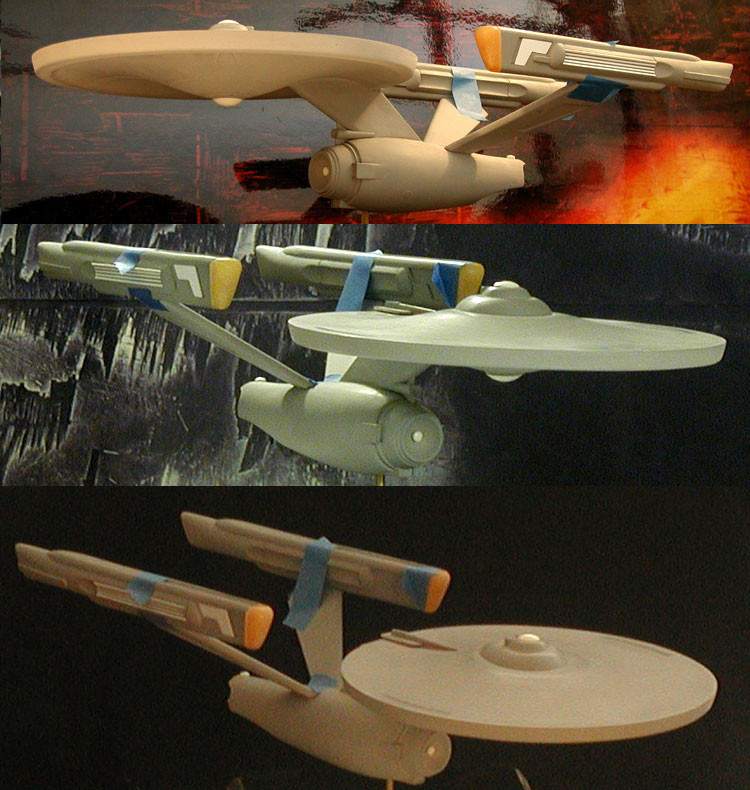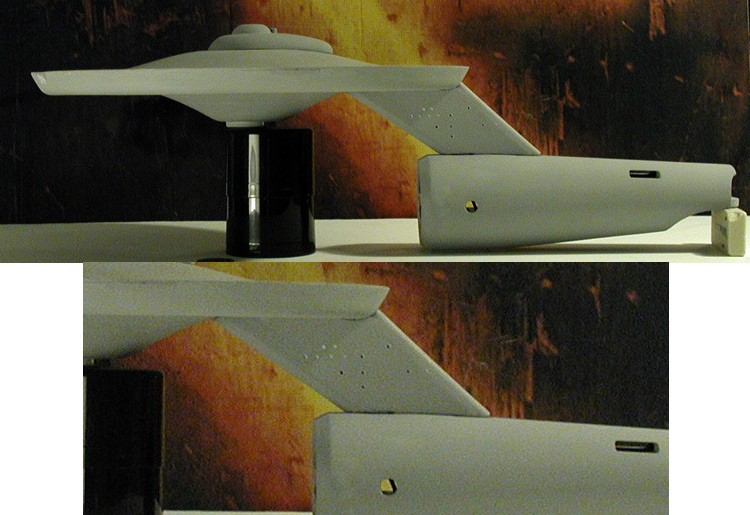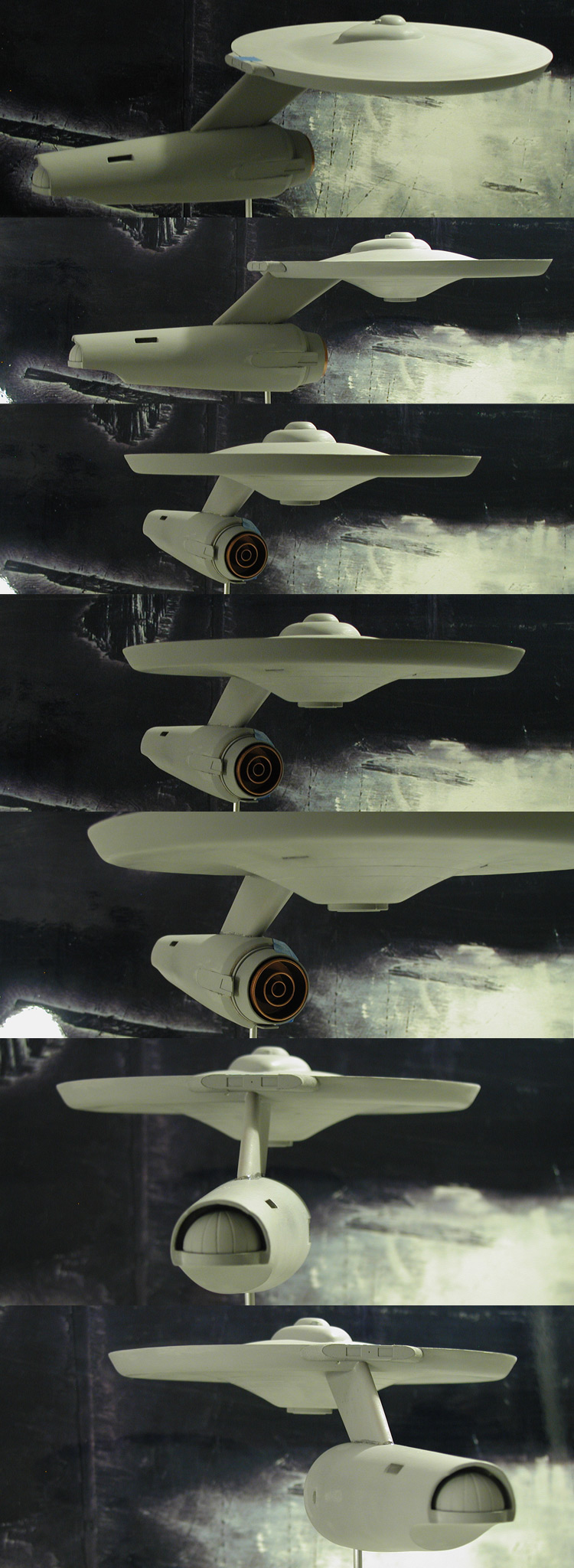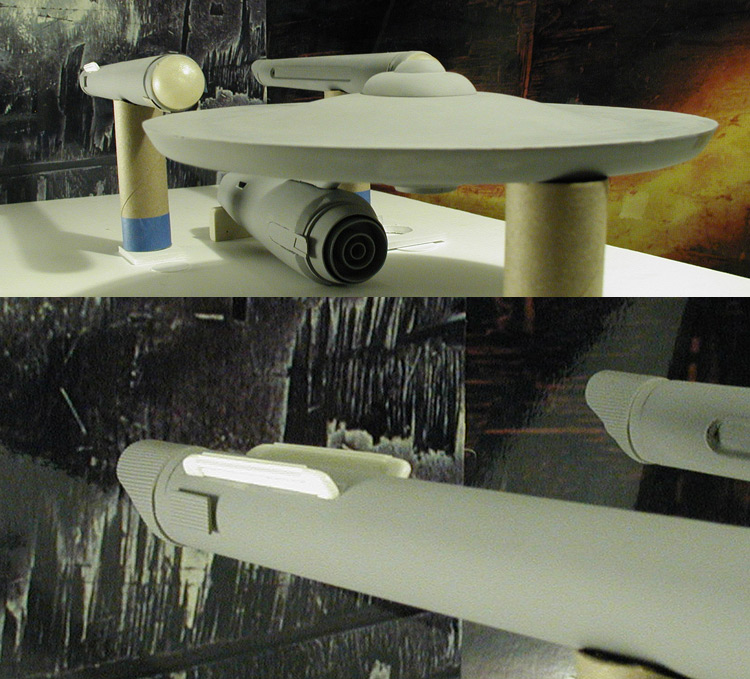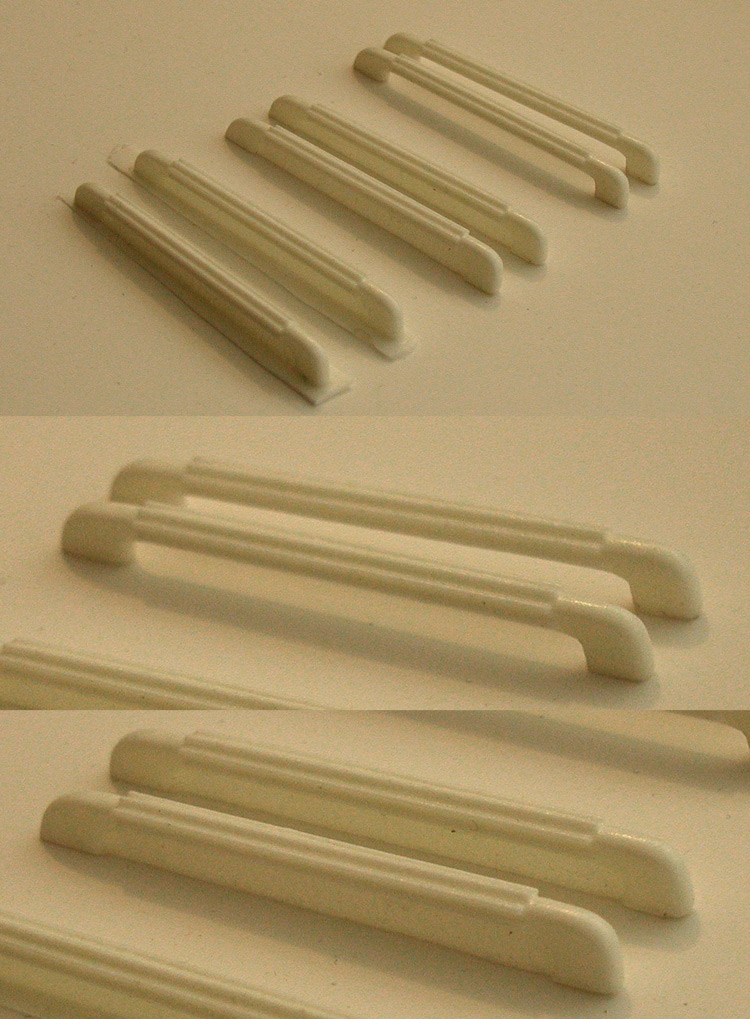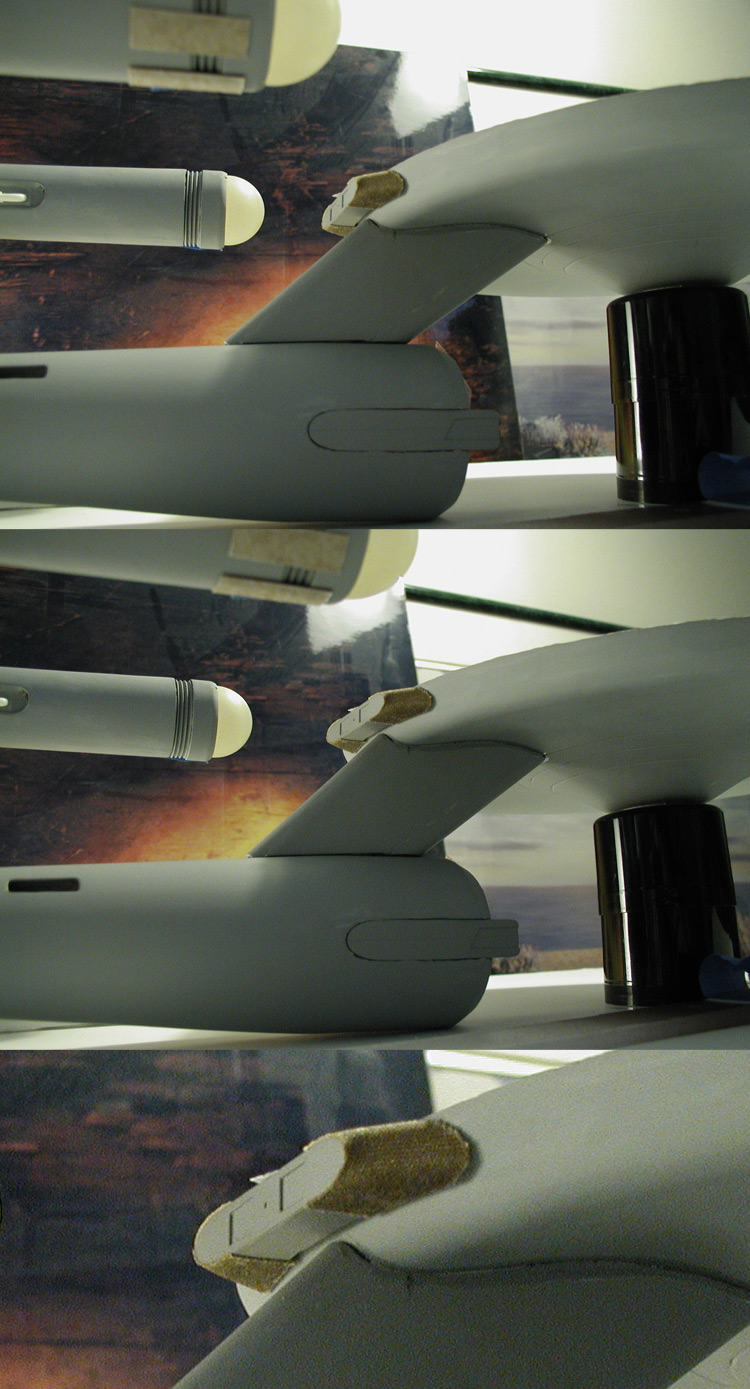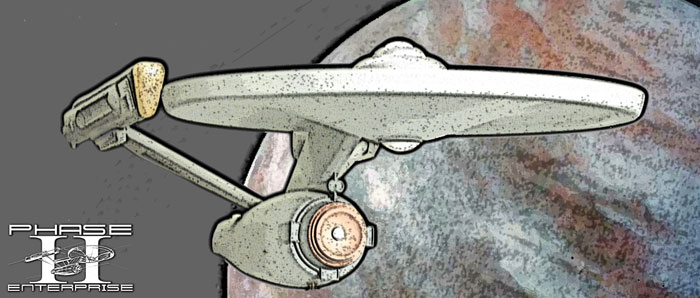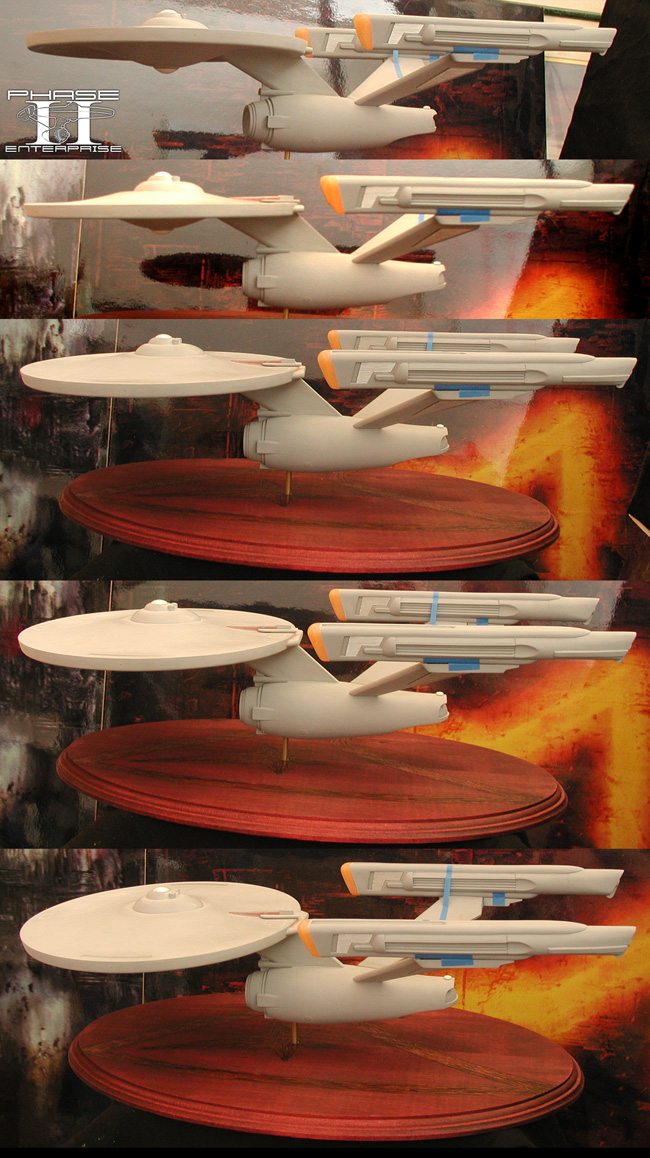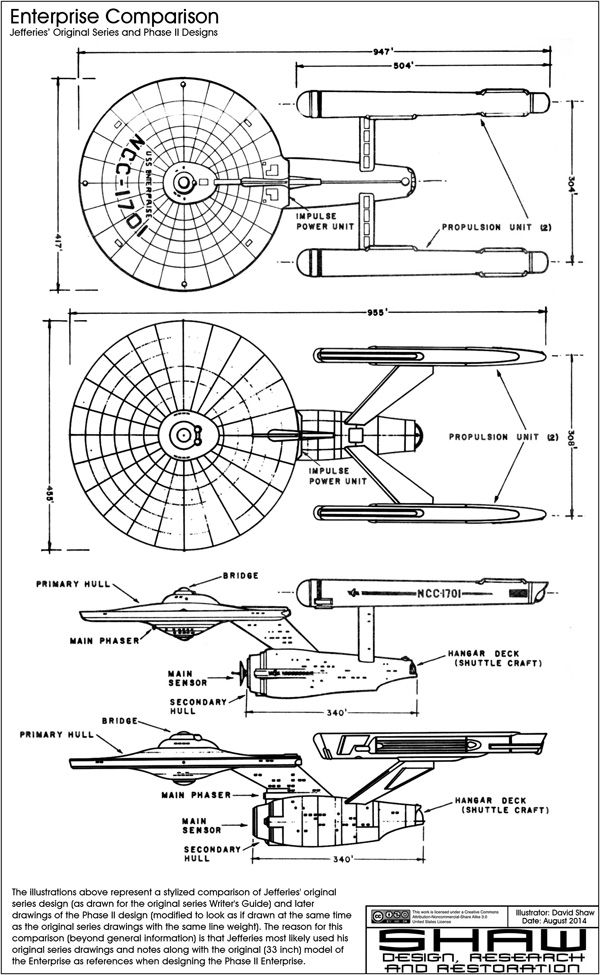Thanks guys!
... I guess I'll need to remember to lock my windows now.

Roddenberry never had any problems with the Phase II Enterprise, either model or design, for Phase II. The issues popped up when Paramount decided to make the pilot into a movie. This caused a large shift in how the production was being approached and new people were brought in from outside to help with the conversion.
Enter
Robert Abel and Associates with Richard Taylor. These guys thought they knew what was needed to make
movie effects that could match
Star Wars. Taylor, who hated the Enterprise design anyways, wanted a bigger model (the Phase II Enterprise was almost 5.5 feet, the TMP model about 8 feet in length) and Magicam (a subsidiary of Paramount) wanted the credit for building the model to help with their resume. Basically, in the game of
musical chairs in the transition from Phase II to TMP, Price/Loos were left without a seat.
The idea that a bigger model was needed was absolutely wrong. The Phase II Enterprise was the same scale as the Reliant, which looked awesome on the big screen. All this was done for political reasons, so people could give themselves credit for what was on screen.
And Taylor is one of the worst offenders of all, and is most likely responsible for the loss of the 33 inch TOS Enterprise loaned to
Robert Abel and Associates (when Roddenberry called Bob Abel asking for the model back, Abel said he didn't know where it was). In Taylor's mind, everything from Phase II should have been scrapped and not really knowing anything about Star Trek, he didn't seem to realize that the 33 inch TOS Enterprise model wasn't part of Phase II. This is evident from a
recent interview where he said...
"The model that was being built really didn't have that - I can't remember any lights that were built into it but it was about two and a half, three feet long or something."
So I think they discarded the 33 inch Enterprise model thinking it wasn't anything special.
Taylor went on to take credit for the redesigning of the nacelles from their original TOS shapes...
"A lot of people like it, of course, so what I did was redesign it by making it much more elongated, more streamlined. I totally redesigned the nacelles so they weren't, as in the original television series, like cigar containers, or circular. They were much more rectilinear and longer, a lot of parallel lines. I was very much trying to give the Enterprise an art deco look, a lot of horizontal lines, stretched things, and added a lot of detail everywhere on the surface and throughout the construction of the Enterprise, that's one of the primary things that I did with all of the models, not just Enterprise, but adding surface detail, enlarging the models, building light systems into them so that we could make multiple passes."
But those were things that Jefferies had actually done (and Probert built upon). And the Phase II Enterprise studio model, which was almost five and a half feet long, was intended to be far more lit than the TMP Enterprise ended up being.
In the interview they show a comparison of the early TMP design with the Franz Joseph plans of the Enterprise to illustrate how much they changed things. A more honest comparison would have been to show their Enterprise design with Jefferies' Phase II design...
But the Phase II model was used in the end. Parts were used to make up the destroyed Enterprise in ST III...
And additional elements were used to make the
USS Bozeman in TNG.
Later when Planet Hollywood asked for items for their restaurant chain, Paramount commissioned Price to build five
TMP Enterprise models which he built using elements from his Phase II Enterprise molds (which he still has).
So yes, it was an expensive endeavor to build a large studio model like the Phase II Enterprise. But even though it wasn't used as the Phase II Enterprise, the work was used over time.
As for my build, here are a few more shots of the model...
Hopefully I'll get some time to work on it in the next couple days.
